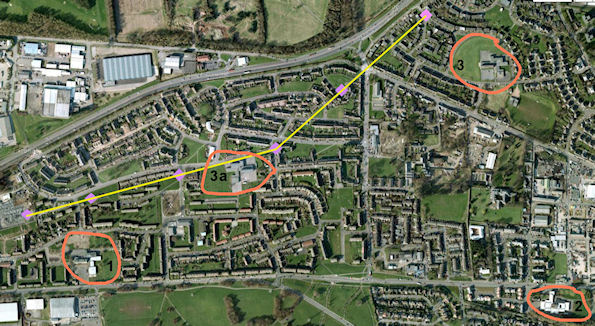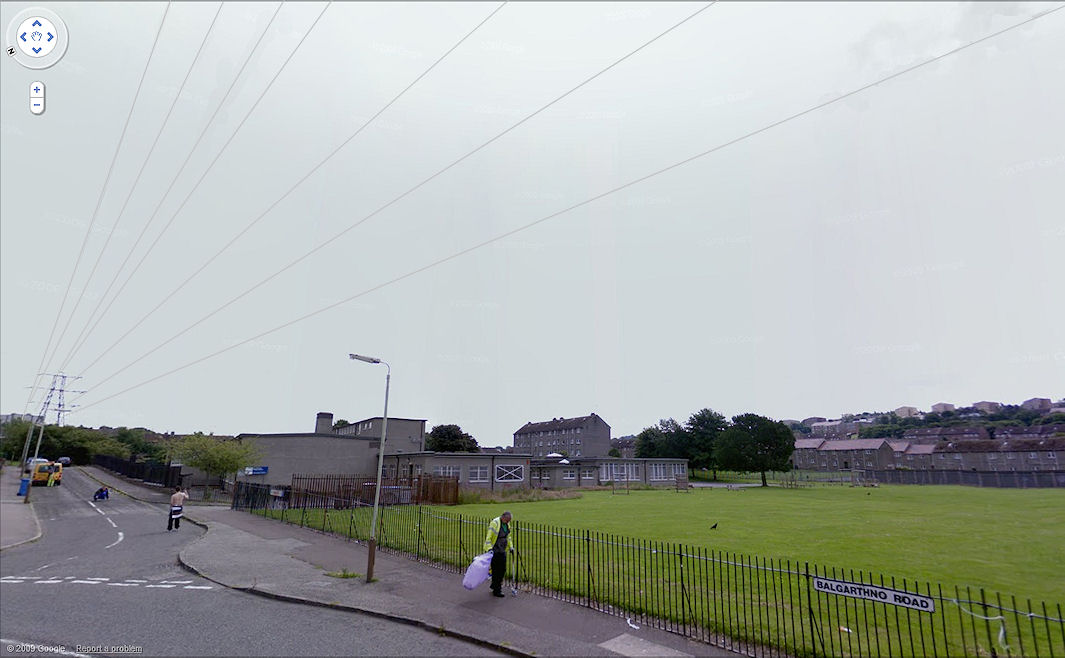 |
 |
|
 |
 |
About Us | Contact |
|
|
02/09/2009 - Dundee Council ignore Childhood Leukaemia risk for schoolDundee Council plans to build new school next to high voltage overhead powerlines despite increased risk of childhood leukaemia Dundee Council are planning to build large new primary school and nursery alongside high-voltage overhead powerlines. Despite the precautionary advice from both the UK Department of Health SAGE Process report, the Health Protection Agency and the Westminster Parliamentary Cross Party Inquiry Report (see below) into developments close to powerlines, Dundee Council rely instead on information gained from mis-interpreting an electrical industry "Fact Sheet". They have decided to build the new school and nursery right next to the powerlines when they have another site, well away from the powerlines, that would cost the same to develop and meet all their non-financial requirements. The BackgroundTo save money, Councillors in Dundee are planning to combine three primary schools and build new premises on one site. They have not acknowleged current precautionary advice regarding building near powerlines. Dundee City Council's deputy education convener Stewart Hunter said he had read many studies and was "comfortable enough" with the merger proposal to be sending his own children to the new school. We would be most interested in the list of many studies he has read. In contrast to Stewart Hunter, a UK Parliamentary Cross Party Inquiry (which included a GP and a senior biologist and cancer researcher) at Westminster looked at all the available evidence and reported in July 2007. They recommended that new homes and schools were not built within 30 metres of 132 kV powerlines and 60 metres of higher voltage lines. The schools
The locations of the schools are shown on the map below (aerial map courtesy of Google Maps) [download larger map]  The existing St Clement's School is mostly built within 30 metres of the 132 kV line, as would be the new school.  You can see the lines running down the edge of the school site edge in this Google street-view (the wires have been highlighted slightly so that you can easily see where they are). The extrance and exit to the site is directly underneath the high-voltage powerline. The adjacent field and proposed site, if we took the 30 metre recommendation of the Cross Party Report (based on distances calculated by SAGE) as being blighted then almost half this suggested site is blighted. In our opinion, it is a non-starter from a duty-of-care point of view. Whose advice?The Council officers' source of "advice" (the ENA "fact sheet update") had to be discovered using a Freedom of Information (Scotland) Act 2002 request, as the Council were understandably reluctant to admit where they obtained their advice from. They misinterpreted the level for caution that the ENA fact sheet supports. This states: "Where there are relatively easy and low-cost ways of reducing felds, it makes sense to adopt these on a precautionary basis, and we support these Recommendations that SAGE makes." Surely choosing Site 3, away from the powerline, would have achieved this? Certainly choosing Site 3a next to the powerline does not. Meeting the ObjectivesIn the Report, Section 11 "POLICY IMPLICATIONS" When you read the Council Report, a redevelopment of the Dryburgh Resource Centre in Napier Rd would also meet their four "non-monetary" criteria, and this is not close to the powerlines. The St Clement's site is recommended on the basis of: "5.6.3 Options 3 and 3a both meet the non-monetary objectives. Option 3a the proposal described in this report, has the lowest Net Present Value (NPV) and is therefore the preferred option." The capital costs (£9.42M) as are the annual property and staff costs (£1.5M) for Options 3 and 3a are identical. The 25-year NPVs are given as £31.7M and £31.0M. These are not accurate values but complex projections with large error bars (probably +/- at least £5M). As the capital and running costs are listed as identical we find it difficult to understand where the predicted £0.7M NPV difference over 25 years actually comes from. The "costs" of Childhood LeukaemiaThe 2007 UK Department of Health SAGE Report states (p29): There are about 400 children in the catchment area attending these schools over (say) 50 years = 400 x 50 = 20000. Child Leukaemia (CL) rate is about 1 per 20,000 per year, so one case of Child leukaemia would be expected to occur among these children without the powerlines and two cases if the powerlines are present. (very approximately - risk is at doubled within 30 metres). So, if you take the possibility on one extra case of CL occurring if the St Clement's school stays (within 30m of a 132kV line) and a new school is built next door within a similar distance to the 132kV line, then the cost to society is more than the £0.7M projected future possible 'saving' that the Council used to choose Option 3a over the Option 3 which is away from powerlines. Plus, of course, saving the suffering and family heartache. Powerwatch is a Member of SAGE. Children with Leukaemia (CwL) are also a member. SAGE is funded by UK Department of Health, CwL and National Grid, and is an official UK Government Stakeholder Process Group. What has been saidA reminder of what was said by the council: The industry "fact-sheet" they consulted does not state that there is no risk to health from powerline EMFs. The full fact sheet concludes: "The UKCCS did not support EMFs causing cancer, but the pooled analysis did suggest an increased risk. The CCRG study reinforces a link between power lines and leukaemia, but suggests it may not be caused by EMFs." (our bolding) Our reading of that is almost exactly the opposite of the Dundee City Council Statement. i.e. there is a statistical association (approx doubling) with proximity to high-voltage powerlines, but it may not be caused by EMFs (and hence, by implication, would not be caused by EMFs from ordinary house wiring and domestic electrical appliances). It does not say that high-voltage overhead power cables pose no more risk than ordinary house wiring and domestic electrical appliances. The industry full fact sheet (16 pages instead of the 2 for the brief SAGE update that Dundee City Council used) says many more things, but includes: "The epidemiological evidence is currently not strong enough to justify a firm conclusion..., nevertheless, the possibility remains that intense and prolonged exposures to magnetic fields can increase the risk of leukaemia in children..." Not only did Dundee Council rely on a mis-interpretation of an industry fact-sheet update, but they did not even cite the source of their information. It had to be extracted from them using Freedom of Information legislation. If the Council are not prepared to reconsider this decision, then we believe that this should be challenged in the Courts on in a Public Inquiry or some similar setting. The Dundee Education Committee Convener, Councillor Liz Fordyce, recently told the Dundee Telegraph the objections had already been considered and dismissed and accused them of "clutching at straws". She added, "If she (a local parent) wants to go for a judicial review I would say that's up to her, if she has the money to go for it. It's her prerogative but she will have to back it up with evidence. Let's get the facts straight: if there is any medical evidence about health effects from pylons at St Clement's, which has been there for 40 years, then prove it to us and we can reconsider." Our ConclusionsCombining primary schools may save some administrative money, but it disrupts the structure of local communities. Parents and children have further to travel (by car, even?). Those hidden community costs are rarely properly taken into account by councils. If the three schools really do have to be combined to save money, then Powerwatch claims that there is sound basis for changing the preferred option to Option 3, the Dryburgh Resource Centre site. It makes the best economic sense as well as the best moral sense. We call on Dundee Council to reconsider its decision Leading Charity, CHILDREN with LEUKAEMIA, strongly supports the conclusion of the Parliamentary Cross Party Report that new houses, nurseries and schools should not be built close to high-voltage overhead powerlines. They also fund research into new treatments and support families who have a child with leukaemia.  Further reading: A Dundee Telegraph report on 27th August 2009 Please note: Page last edited / updated 3 Sept 2009 This page has links to content that requires a .pdf reader such as |

